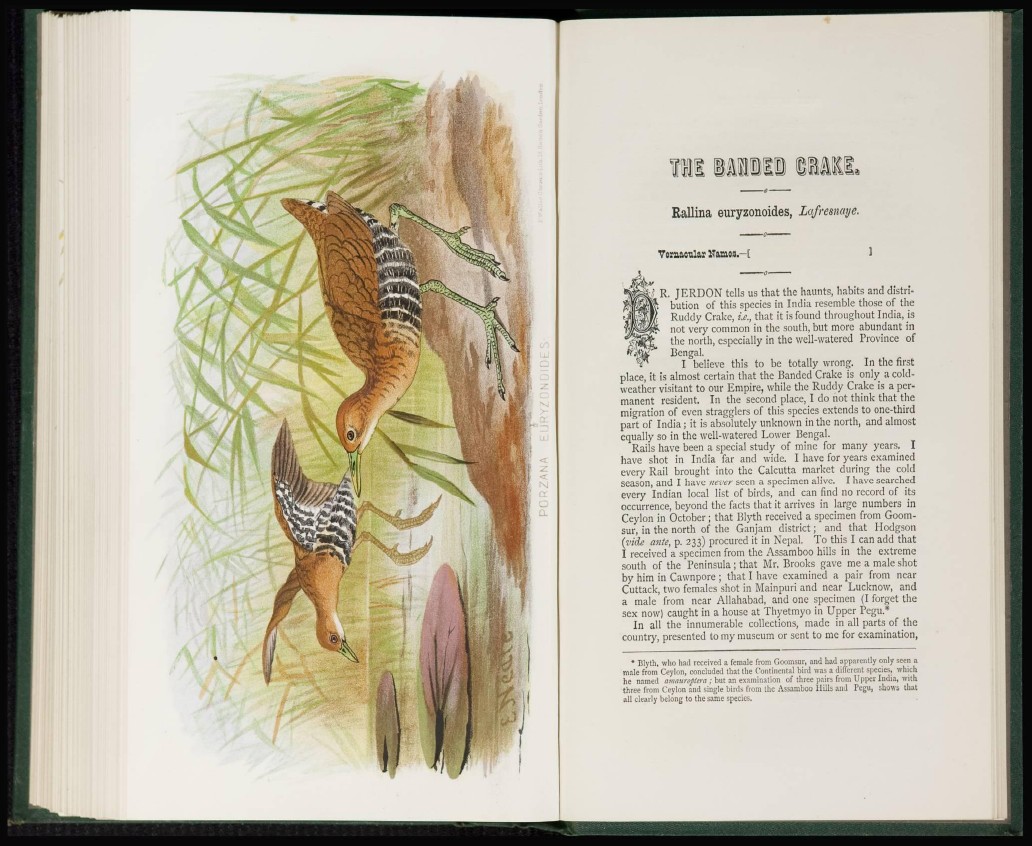
Rallina euryzonoides, Lafresnaye.
Vernacular Names.—[ ]
R. JERDON tells us that the haunts, habits and distribution
of this species in India resemble those of the
Ruddy Crake, i.e., that it is found throughout India, is
not very common in the south, but more abundant in
the north, especially in the well-watered Province of
Bengal.
I believe this to be totally wrong. In the first
place, it is almost certain that the Banded Crake is only a coldweather
visitant to our Empire, while the Ruddy Crake is a permanent
resident. In the second place, I do not think that the
migration of even stragglers of this species extends to one-third
part of India; it is absolutely unknown in the north, and almost
equally so in the well-watered Lower Bengal.
Rails have been a special study of mine for many years. I
have shot in India far and wide. I have for years examined
every Rail brought into the Calcutta market during the cold
season, and I have never seen a specimen alive. I have searched
every Indian local list of birds, and can find no record of its
occurrence, beyond the facts that it arrives in large numbers in
Ceylon in October; that Blyth received a specimen from Goomsur,
in the north of the Ganjam district; and that Hodgson
(vide ante, p. 233) procured it in Nepal. To this I can add that
I received a specimen from the Assamboo hills in the extreme
south of the Peninsula ; that Mr. Brooks gave me a male shot
by him in Cawnpore ; that I have examined a pair from near
Cuttack, two females shot in Mainpuri and near Lucknow, and
a male from near Allahabad, and one specimen (I forget the
sex now) caught in a house at Thyetmyo in Upper Pegu.*
In all the innumerable collections, made in all parts of the
country, presented to my museum or sent to me for examination,
* Blyth, who had received a female from Goomsur, and had apparently only seen a
male from Ceylon, concluded that the Continental bird was a different species, which
he named amauropura ; but an examination of three pairs from Upper India, with
three from Ceylon and single birds from the Assamboo Hills and Pegu, shows that
all clearly belong to the same species,